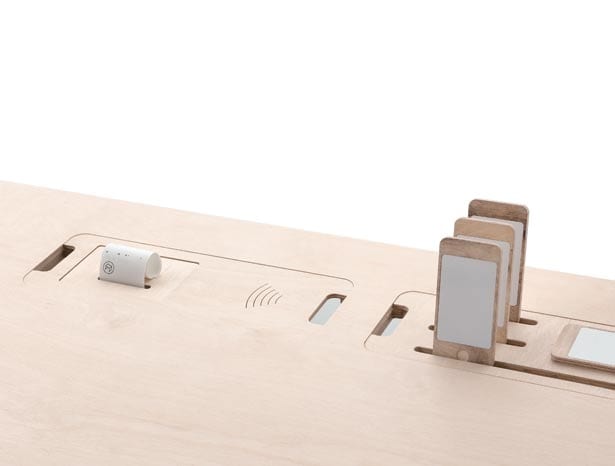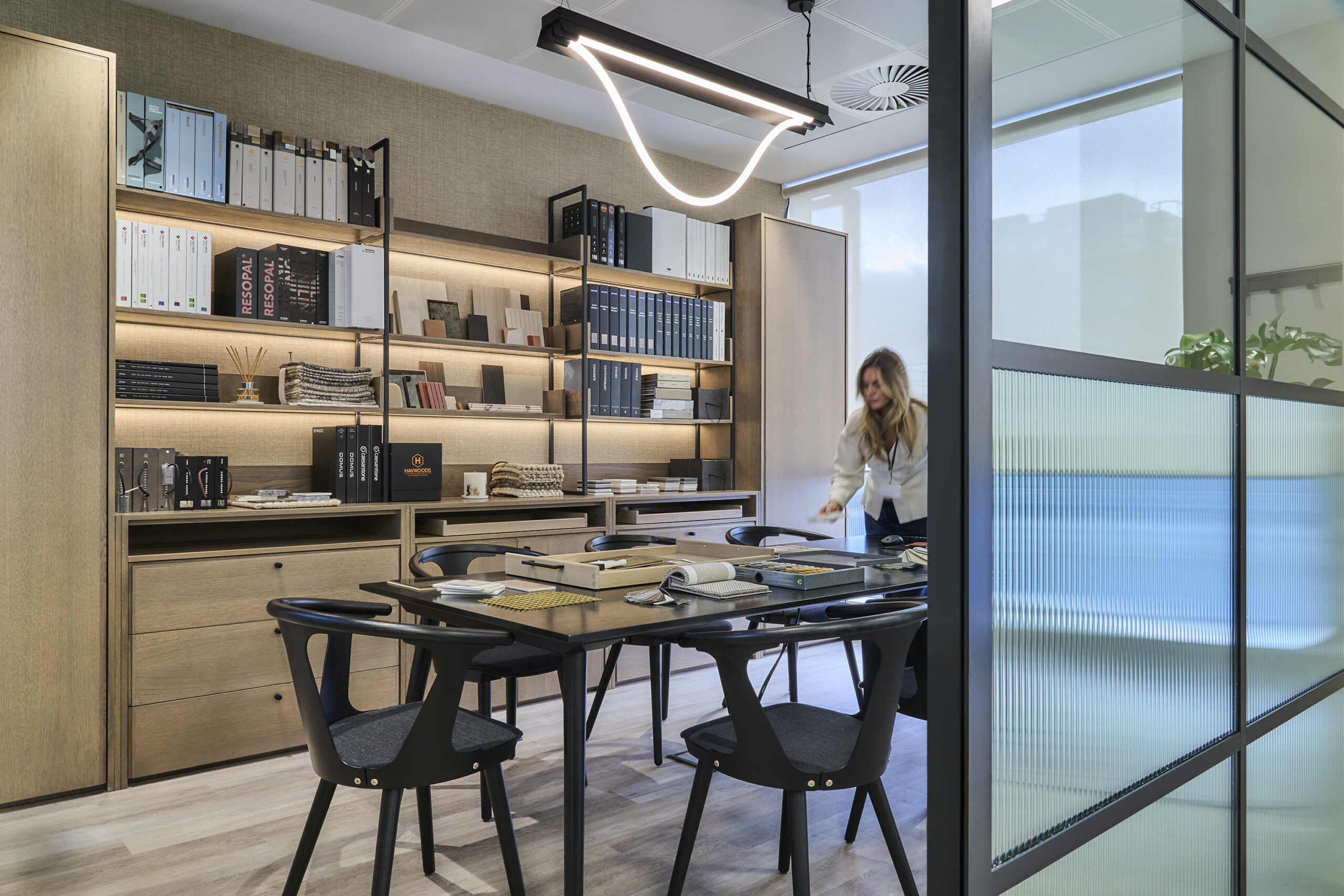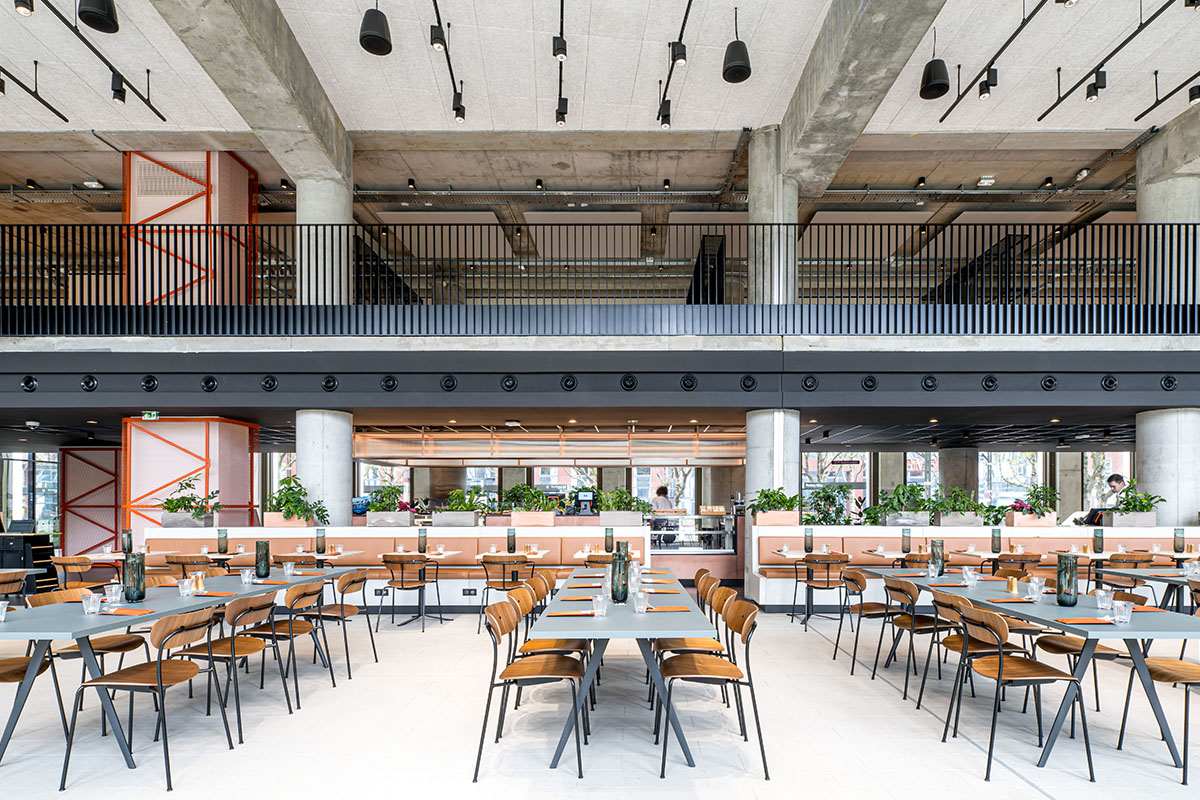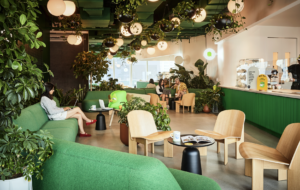 Opendesk has developed a desk with built-in motherboard|||
Opendesk has developed a desk with built-in motherboard|||
Offices these days are buzzing. Literally. Alerts are coming through phones, computers, and watches; desks are embedded with charging docks and LED notification systems, and virtual reality is transforming how architects communicate with their clients.
Technology was once confined to the computer, but the modern office has now become incredibly savvy, employing some of the tech industry’s most innovative products into the workplace. From virtual receptionists and smart desks to a rating system that assess a building’s technical prowess, the increase of tech in the office has impacted every aspect of the workspace and industries have responded to accommodate these shifts.
For many offices, whether it’s a single desk in a co-working environment or a large company occupying an industrial estate, agile workspaces have become a part of the workplace strategies and how tech fits into the fit-out of the space is an important element to how they do business. Offices don’t just want to be hyper-connected, they demand it and strong Internet connectivity is now crucial for any building.
“Technology must enable you to do things seamlessly and that’s part of the workflow but also part of the technology infrastructure within the building,” said Sean Monie, director of Savills’ building and project consultancy team. “Developers and landlords have got to be able to enable buildings to a degree to allow that to happen.”

The ability for a structure to respond to connectivity varies from building to building. Elements such as the density of the building, its materials and the number of walls the structure has will affect its level of connectivity but developers have cleverly worked around this by utilising a shell and floor or shell and core concept.
“Developers will finish the building to more of a shell and the tenant can fit what they need,” Monie explained. “That gives more of a flexibility for tenants to investigate opportunities to run their own infrastructures within an open format and also to customise their technology without having to rip down ceilings.” Finding a building with robust Internet can be difficult, but the rise of cloud computing means that connectivity is vital for communication.
Two and half years ago, New York-based business people Arie Barendrecht and Jared Kushner launched a platform that certifies connectivity in commercial buildings. WiredScore developed an international standard for assessing connectivity in commercial properties. The Connectivity Rating Scheme assesses and awards commercial buildings with a four-tier certification level based on their connectivity. The certification has been compared to the LEED rating system. It was first unveiled in America in 2013 and made its way across the pond last year.
“There are three key elements to WiredScore,’ explained William Newton, UK director of WiredScore. “How quickly you can set things up, how resilient the technology is, and what kind of price you are paying compared with the speed you are getting – speed as a function of price.”
 Clients are engaging through virtual reality apps
Clients are engaging through virtual reality apps
Landlords fill out a survey then receive an initial rating. If the building isn’t up to WiredScore’s standards, the company will offer suggestions on how to improve the building’s connectivity before a final certification is issued, which is valid for two years.
Since its London debut, several top London buildings have already received their ratings including the Greater London Authority, the Canary Wharf Group and British Land. The office is now part workspace, part showroom and part space station with its integration of technology from the front of house experience to a whole new notion of office furniture systems.
Expectations of what good front of house service is changing and Americans have started to adopt the concept of a ‘virtual receptionist’ that replaces human contact with interactive, touch screen video panels. While the UK hasn’t embraced the idea with the same vigour, offices here are showing a growing interest in technologies including facial recognition and automated visitor management systems that build a comprehensive profile of visitors.
“Front of house teams can use the information stored on visitor management systems to build profiles of frequent guests and adapt their services in line with specific needs – for example, informing the catering team in advance if a guest has a particular allergy,” said Liz Cummins, director of corporate front of house services at support service Interserve.
Undoubtedly, this personalisation of the visitor experience will impress visitors and can be used as another tool to reflect the company’s branding. But human receptionists are not endangered species yet. While companies are keen to adopt technology, the receptionist is still an important gatekeeper of matching expectations with reality.
 Nik desks make space for more mobile technology
Nik desks make space for more mobile technology
“Technology in the front of house context should never be seen as a replacement for human interaction,’ said Cummins. ‘Used intelligently, however, it can be an important tool for helping front of house teams provide a more tailored and personal experience for guests and employees.”
Customisation isn’t limited to the front of house experience though. Designers and architects are finding new ways to communicate and include clients into the design process. Augmented and virtual realities are now being used to allow clients more control before delivering the final product.
Architect firm NBBJ have collaborated with Visual Vocal to create a virtual reality platform for architects to engage their clients in the design process with more efficiency. “With so many clients and project stakeholders pressed for time and in distributed locations, traditional methods of sharing designs and obtaining feedback were not adequate,” said David Lewis, Partner with NBBJ in London.
The new virtual reality tool will allow architects to share designs via a downloadable app and a viewer that attaches to clients’ smart phones. This allows clients to view the project in an interactive 3D environment.
Decisions such as wall placement, paint colour can be immediately altered in this virtual reality so clients see exactly what the building will look like before it’s built. The immediate feedback from clients mean designers can integrate their ideas into a workable design for the final product.
 Design app and viewer work through clients’ smartphones
Design app and viewer work through clients’ smartphones
Polish company Tylko has created an augmented reality app that allows clients to see 3D images of their products in situ, such as a home office, but also give clients the option to customise the design once it’s in the augmented reality. Clients can alter elements such as the height of the desk or the width of a bookshelf as long as it doesn’t compromise the integrity of the whole design.
“We like to think of augmented reality as what Yves Béhar calls ‘adaptable design authorship’– an opportunity for a user to become a co-author of a final product,” said the Tylko team via email. While cloud-based apps are an important part of the office, perhaps it’s the reimagining of the humble desk that is really exciting.
In London, Opendesk design studio has created a fully customisable smartdesk that includes a built-in motherboard not dissimilar ones found in a desktop. “We cut little channels and recesses that physically fit the components under the surface of the desk,” explained Joni Steiner of Opendesk.
There are different versions of the smartdesk but as each desk is bespoke, the possibilities are endless. Most include wireless charging capabilities but being considered are a LED notification system embedded into meeting tables that will send a gentle reminder that your booking time is up, or a data storage program that would embed a hard drive wirelessly into a desk so it can sync and backup the computer when the user logs on.
In Los Angeles, German product designers Henner Jahns and Holger Zerfass have also designed a smart desk. The NIK desk incorporates a charging dock into the desk itself to increase productivity. Docks sit atop peripherals and cables are cleverly hidden within the desk, keeping everything neat and organised.
“In today’s world we experience mobile technology and all the time people are charging docks on tables and we wanted to make a simple means to at least have a place for mobile technology to charge it there,” said Jahns. The project was funded via Kickstarter and nearly tripled its $27,800 goal, confirming that technology in office furniture is a growing market.
Technology and connection are redefining how employees use their workplaces



















